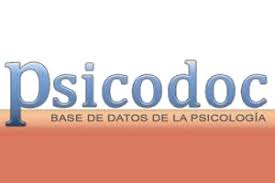This journal provides open, immediate access to its contents, based on the principle that offering the public free access to research helps to promote a higher global exchange of knowledge.
As such, all journal articles are published under a Creative Commons Attribution-NonCommercial-ShareAlike 4.0 International License (CC BY-NC-SA), by which commercial use of the original work or its possible derived works is not allowed, and the distribution thereof must be done with the same license elements regulating the original work.
http://creativecommons.org/licenses/by-nc-sa/4.0/
Abstract
Throughout the ageing process, pain arises as one of the most prevalent symptoms which regularly receives the least attention. As a result, pain can negatively impact the quality of life of older people. Fatigue is often present in older adults, yet it is frequently overlooked during consultations.
Therefore, the aim of this study was to assess the reliability and validity of the Fatigue Silhouettes, Pain Faces Revised, and Pain Catastrophizing scales in a sample of older adults from the metropolitan area of Bucaramanga. The study included 131 older adults, both institutionalized and non-institutionalized. The results yielded high levels of reliability across all three scales. Moreover, the evidence of validity was assessed through exploratory factor analysis. Overall, these measuring scales provide reliable instruments to healthcare professionals evaluating pain in older adults in Colombia. Future research should expand the sample to other regions of the country.
References
Asociación Colombiana para el Estudio del Dolor. (2007). Dolor en el adulto mayor. Editora Guadalupe Ltda.
Asociación Internacional para el Estudio del Dolor. (2020). Nueva definición de dolor según la IASP. Dolor. https://www.dolor.com/es-es/para-sus-pacientes/tipos-de-dolor/nueva-definicion-dolor
Brijaldo, S. (2021). Dolor, fatiga y calidad de sueño en el adulto mayor [Tesis doctoral, Universitat Rovira i Virgili]. https://www.tesisenred.net/bitstream/handle/10803/671674/Tesis%20Solangel%20Brijaldo%20Moreno.pdf?sequence=1&isAllowed=y
Cabrera, C. (2019). Dolor crónico e independencia funcional: análisis vincular en adultos mayores de la ciudad de Viedma [Tesis pregrado, Universidad Nacional de Río Negro]. https://rid.unrn.edu.ar/bitstream/20.500.12049/4165/1/Cabrera-2019.pdf
Catananti, C. y Gambassi, G. (2010). Pain assessment in the elderly. Surgical Oncology, 19, 140-148.
Cerquera, A., Uribe, A., Vera, H., Pérez, R., Martin, M., Rosario, I. et al. (2019). Factores psicosociales y dolor percibido en el adulto mayor. Editorial Universidad Pontificia Bolivariana.
Cho, S., Kim, H. y Lee, J. (2013). Validation of the Korean version of the Pain Catastrophizing Scale in patients with chronic non-cancer pain. Quality of Life Research, 22, 1767-1772. https://doi.org/10.1007/s11136-012-0308-2
Colegio Colombiano de Psicólogos. (2019). Acuerdo número 17. Manual deontológico y bioético del psicólogo. https://www.colpsic.org.co/wp-content/uploads/2021/07/Acuerdo-N%C2%B0-17-de-mayo-del-2019.pdf
De Andrés, J., Acuña, J. y Olivares, A. (2014). Dolor en el paciente de la tercera edad. Revista Médica Clínica Las Condes, 25(4), 674-686. https://doi.org/10.1016/s0716-8640(14)70089-6
Ferrando, L., Bobes, J., Gibert, J., Soto, M. y Soto, O. (2000). MINI Entrevista Neuropsiquiátrica Internacional, versión en español. Sheehan DV & Lecrubier Y.
Guerrero, M. y Gómez, M. (2019). Estudio nacional sobre prevalencia, características e incapacidad asociada al dolor en la población colombiana. Revista Dolor, 8(1), 17-25. https://dolor.org.co/biblioteca/revistas/Revista%208_1.pdf
Hardy, S. y Studenski, S. (2008). Fatigue predicts mortality in older adults. Journal of American Geriatrics Society, 56(10), 1910-4. https://doi.org/10.1111/j.1532-5415.2008.01957.x
Hicks, C., Von Baeyer, C., Spafford, P., Van Korlaar, I. y Goodenough, B. (2001). The Faces Pain Scale - Revised: Toward a common metric in pediatric pain measurement. Pain, 93,173-183. https://mcgill.ca/anesthesia/files/anesthesia/faces_pain_scale.pd
Kim, Y., Park, J., Moon, Y. y Han, S. (2017). Assessment of pain in the elderly: A literature review. The National Medical Journal of India, 30(4), 203-207. https://doi.org/10.4103/0970-258X.218673
La Serna, L. y Maraví, Y. (2018). Catastrofismo ante el dolor crónico en adultos mayores que se atienden en un hospital de Lima [Tesis de pregrado, Universidad Norbert Wiener]. http://repositorio.uwiener.edu.pe/bitstream/handle/123456789/2966/TESIS%20La%20Serna%20Lucia%20-%20Marav%C3%AD%20Yiye.pdf?sequence=1&isAllowed=y
Ley 1090 de 2006. Por la cual se reglamenta el ejercicio de la profesión de Psicología, se dicta el Código Deontológico y Bioético y otras disposiciones. 6 de septiembre de 2006.
Lloret, S., Ferreres, A., Hernández, A. y Tomás, I. (2014). El análisis factorial exploratorio de los ítems: Una guía práctica, revisada y actualizada. Anales de Psicología, 30(3), 1151-1169. http://dx.doi.org/10.6018/analesps.30.3.199361
Martín, M., Pérez, R., Cerquera, A., Uribe, A. y Vera, H. (2019). Estado del arte en la investigación de factores psicosociales en el dolor osteomuscular en adultos mayores. Revista del Hospital Psiquiátrico de La Habana, 16(1), 63-86. https://www.medigraphic.com/pdfs/revhospsihab/hph-2019/hph191e.pdf
Merino, C. (2018). Valoración del dolor en pediatría: Validez de las escalas del dolor [Tesis de pregrado, Universitat de les Illes Balears]. https://dspace.uib.es/xmlui/bitstream/handle/11201/150314/Merino_Bonilla_Cristina.pdf?sequence=1&isAllowed=y
Miró, J. Huguet, A. (2008). The catalan version of the Pain Catastrophizing Scale: A useful instrument to assess catastrophic thinking in whiplash patients. The Journal of Pain, 9(5), 397-406. https://doi.org/10.1016/j.jpain.2007.12.004
Miró, J., Huguet, A., Nieto, R., Paredes, S., & Baos, J. (2005a). Valoración de la escala de dolor de caras-revisada (faces pain scale-revised) para evaluar la intensidad del dolor pediátrico en niños castellano parlantes. Revista Sociedad Española de Dolor, 12(7), 407-416. https://scielo.isciii.es/pdf/dolor/v12n7/original2.pdf
Miró, J., Huguet, A., Nieto, R., Paredes, S., & Baos, J. (2005b). Evaluation of reliability, validity, and preference for a Pain Intensity Scale for use with the elderly. The Journal of Pain, 6(11), 727-735. https://www.jpain.org/article/S1526-5900(05)00734-0/pdf
Miró, J., Sánchez, E., Brijaldo, S. y Jensen, M. (2019). The Silhouettes Fatigue Scale: comprehensibility and validity in older individuals. Disability and Rehabilitation, 42(13), 1906-1911. https://doi.org/10.1080/09638288.2018.1539129
Montero, I. y León, O. (2002). Clasificación y descripción de las metodologías de investigación en Psicología. Revista Internacional de Psicología Clínica y de la Salud, 2(3), 503-508.
Olmedilla, A., Ortega, E. y Abenza, L. (2013). Validación de la escala de catastrofismo ante el dolor (Pain Catastrophizing Scale) en deportistas españoles. Cuadernos de Psicología del Deporte, 13(1), 83-94. https://doi.org/10.4321/S1578-84232013000100009
Pedraz, B. (2018). Fatiga: historia, neuroanatomía y características psicopatológicas. Una revisión de la literatura. Revista de Neuro-Psiquiatría, 81(3), 174-182. https://dx.doi.org/https://doi.org/10.20453/rnp.v81i3.3385
Raja, S., Carr, D., Cohen, M., Finnerup, N., Flor, H., Gibson, S. et al. (2020). The revised International Association for the study of pain definition of pain: Concepts, challenges, and compromises. Pain, 161(9), 1976-1982. https://doi.org/10.1097/j.pain.0000000000001939.
Resolución 8430 de 1993 (Ministerio de Salud y Protección Social). Por la cual se establecen las normas científicas, técnicas y administrativas para la investigación en salud. 4 de octubre de 1993.
Saéz, M., Sánchez, N., Jiménez, S., Alonso, N. y Valverde, J. (2015). Valoración del dolor en el anciano. Revista de la Sociedad Española del Dolor, 22(4), 271-274.
Seyler, A., Hernández-Guzmán, L., Freyre, M., González-Montesinos, M. y Sullivan, M. (2014). Validez de la Escala de Catastrofización del Dolor. Revista El Dolor, 61, 18-24. https://www.ached.cl/upfiles/revistas/documentos/5522ff2905431_original261.pdf
Sullivan, M., Bishop, S. y Pivik, J. (1995). The Pain Catastrophizing Scale: Development and validation. Psychological Assessment, 7(4), 524-532.
Sullivan, M., Thorn, B., Haythornthwaite, J., Keefe, F., Martin, M., Bradley, L. y Lefebvre, J. (2001). Theoretical perspectives on the relation between catastrophizing and pain. Clinical Journal of Pain, 17(1), 52-64. https://doi.org/10.1097/00002508-200103000-00008.
Trujillo, C. (2008). Epidemiología del dolor en el adulto mayor. En C. Fernández. Dolor en el Adulto Mayor (pp. 21-28). Editora Guadalupe Ltda.
Walton, D. M., Wideman, T. H. y Sullivan, M. J. L. (2013). A rasch analysis of the Pain Catastrophizing Scale supports its use as an interval-level measure. The Clinical Journal of Pain, 29, 499-506. https://doi.org/10.1097/AJP.0b013e318269569c





















